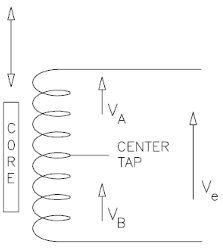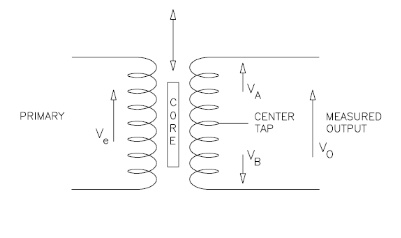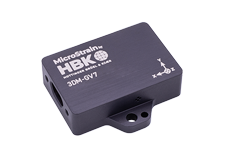FAQs
Videos
In a word, no. The design of an LVDT’s coil forms a Wheatstone full bridge and the design of LORD's DVRT coil forms a Wheatstone half-bridge. LORD MicroStrain® signal conditioning electronics are designed for the half-bridge. Likewise, a DVRT can not use a LVDT's signal conditioning electronics.
DVRT (Differential Variable Reluctance Transducer) and LVDT (Linear Variable Differential Transformer) combined with their signal conditioners convert a linear displacement into a linear variable electrical output signal. The displacement is detected by the movement of a core within the coils inside of the sensor. The difference between the sensors is in their coil format.
DVRT: The coil shown below is energized using an AC excitation through the center tap. The coil is usually arranged in a Wheatstone bridge with the Center Tap being the bridge excitation (forming a "half bridge"). With the core in the central location (null) the signals Va and Vb are equal. When the core moves, Va and Vb vary proportionally. Since this design is less complicated we are able to produce considerably smaller sensors than LVDT manufacturers.

LVDT: The primary coil is excited with an AC waveform. When the core is in the central location, the coupling between the secondary coils (Va & Vb) and the primary coil Ve) is equal. When the core moves, Va changes proportionally to Vb in both magnitude and phase.

The 3DM is a 3-axis orientation sensor capable of measuring:
- -180˚ to + 180˚ of yaw (heading)
- -180˚ to +180˚ of roll
- -90˚ to +90˚ of pitch (see note following)
Note: The 3DM has a pitch range of +/-90˚. It will measure pitch accurately within this range. However, due to a mathematical singularity in the Euler theorem, as pitch exceeds either -70˚ or +70˚, the yaw and roll measurements of the 3DM will become numerically unstable. So to put it another way, if you are just measuring pitch with the device, all measurement between -90˚ and +90˚ will be accurate. If you are measuring pitch and roll at the same time (for example), pitch measurements beyond -70˚ or + 70˚ will effect the accuracy of the roll.
Here is a link to a detailed technical note: http://files.microstrain.com/Orientation%20Conversion%20formulas.pdf
No, not currently. If you need an analog out option, please consider our 3DM-GX1® at:
Yes. We have had good success with several types of off-the-shelf USB to serial port adaptors, such as those from IOGear and Keyspan, which may be purchased through any of the electronics products distributors.
Yes. We provide a complete data communications protocol manual which describes in detail each and every command and response that is available with the devices. Applications may be developed in any programming environment (C, VB, LabVIEW, Matlab, etc.) which supports communication via serial port.
Here is a link to a detailed technical note: http://files.microstrain.com/3DM-GX3-25_OEM_Footprint_and_Connector.pdf
No – only one can be used at a time. The device auto-senses which communication signal is attached (USB or serial), and only uses that channel for communications.
The standard unit uses a specialized Ulti-Mate brand micro-DB9. This technical note contains more details: http://files.microstrain.com/TN-I0023_Inertia-Link_3DM-GX2_3DM-GX3_Pin-Outs.pdf
The OEM unit uses a Samtec FTSH-105-01-F-D-K. This technical note contains more details: http://files.microstrain.com/3DM-GX3-25_OEM_Footprint_and_Connector.pdf
LORD MicroStrain® suggests that you purchase additional connectors with your order.










